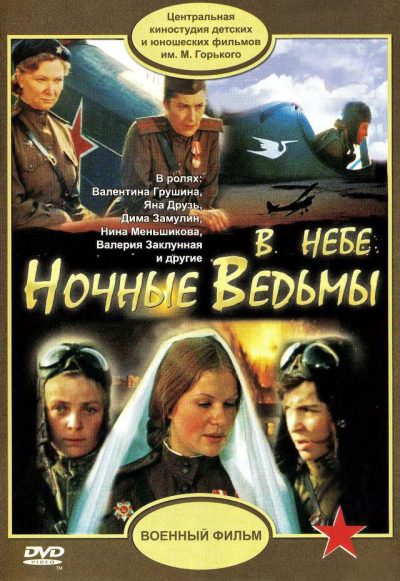 Lance Charnes and I are Goodreads friends, and I’ve read and liked two of his earlier novels; so he offered me a free review copy of this newly-published book. (There wasn’t any guarantee that I’d also like this one, but he does know my tastes pretty well.) The opener for a projected new series, this tale spins off from the author’s DeWitt Agency Files, and Carson (no first name!), the protagonist here, is an important character in the opener for the first series, The Collection. (This review avoids spoilers for Zrada, but might have some for the former novel.)
Lance Charnes and I are Goodreads friends, and I’ve read and liked two of his earlier novels; so he offered me a free review copy of this newly-published book. (There wasn’t any guarantee that I’d also like this one, but he does know my tastes pretty well.) The opener for a projected new series, this tale spins off from the author’s DeWitt Agency Files, and Carson (no first name!), the protagonist here, is an important character in the opener for the first series, The Collection. (This review avoids spoilers for Zrada, but might have some for the former novel.)
The DeWitt “Agency” operates on the edge (and sometimes over the edge) of legality in the world of super-expensive art objects trade, a milieu with a decidedly dark underbelly, which the author has thoroughly researched. But, besides the change from a male to a female protagonist, where I classified the original series as crime fiction, I’d classify this one more as straight action-adventure. The emphasis here isn’t on art, the mechanics of art swindles, etc.; the art in the story is more of a McGuffin, with the emphasis on action, danger, derring-do, weapons and explosions. (This book is set in 2016, the same year the original book was published, and the author establishes that the events in the latter have already happened.)
Ex-cop Carson (she’s divorced, but still uses her married name) is a complex, thoroughly round and very distinctive character, and a highly private person with her share of secrets. (We get to know her here in much more depth than we do in The Collection, though she was also well-realized there.) Abrasive, prickly, potty-mouthed and tough as nails, she works as a mercenary for Allyson DeWitt, and also hires out, albeit reluctantly, as an occasional hit woman for a Russian mob boss, in order to protect family who are under his gun –though she does draw a firm line in the sand against harming innocents. As that suggests, there’s more moral depth to her than you might at first think; she’s actually a person of very real integrity and honor. She’s got a conscience that she listens to; her word’s her bond, and she cares about people, though she doesn’t trust or make friends easily.
This time out, Carson’s mission is legally and ethically unobjectionable. Back in 2009, two valuable 15th-century paintings were stolen in a burglary at a German museum. Now, they’ve fallen into the hands of a Chechen fence, who’s wiling to return them to the legal owner –for 2 million Euros. If he made that exchange in any peaceful, law-abiding country with an honest and functional police force, he’d be arrested in minutes. So, he’s set up the meeting in the lawless, war-ravaged Donbass, Ukraine’s break-away Eastern region, and cut a cash-strapped (but well-armed) rebel militia into the deal as his partners. The DeWitt Agency is handling the swap. Our heroine’s job is to deliver the cash safely, act as bodyguard for the museum staffer who can authenticate the paintings, and bring both of the latter back intact, come hell or high water.
Besides being obviously combat-capable, she landed the assignment because she speaks both Ukrainian and Russian; though raised in Canada, she’s of Ukrainian stock (her maiden name was Tarasenko). As the book opens, she, the museum expert, and the Agency’s local “associate” and his two minions are pulling into the meeting place. Her nerves are on edge; a LOT of wealth is going to be on the table here, and she’s surrounded by hungry, desperate strangers (or people she knows to be morally dubious) for many miles around. (And readers who know Ukrainian won’t be reassured by the book title; it’s the word for “betrayal”….)
Here as in The Collection, Lance writes in the present tense; this takes a moment or two of getting used to if your mind is expecting past tense. But I’ve encountered this technique before in a number of books, so adjusted quickly; and it does create a sense of “you-are-there” immediacy. The plotting has its twists and turns, but it’s mostly quite believable; it’s also focused on one strand, though from different perspectives, and tautly compressed in time, occupying just nine days. Narration is in third-person, but in the vocabulary of whatever character is the current viewpoint one (usually Carson, if she’s present).
For me, it wasn’t a quick read; the author’s prose style is straightforward, but there are a lot of Slavic personal and place names (a character list and real-world map of the geographical setting is provided) and references to unfamiliar-to-me types of guns and military hardware to wade through, and I found myself reading more carefully to pick up details of description and action. However, it’s a very gripping, involving read which quickly engaged me emotionally. The narrative pace itself is quite fast, and while the action isn’t “non-stop” (any book in which it actually is would by definition be pretty shallow otherwise, which this one definitely isn’t!), there’s a lot of it, steadily punctuating the narrative. Vivid, realistic and well-realized action scenes are one of this author’s fortes.
An even more important one is development of nuanced characters who come to life as understandable people, on both sides of the country’s civil war. For instance, the militia characters are not cartoon villains, or necessarily “villains” at all, as such. Some characters definitely ARE villains (though not cartoonish ones), but even they may have an admixture of better qualities along with their sleaze. Fans of action heroines here will have the added plus of meeting another fighting female, ex-Ukrainian National Guard soldier Galina, who’s far from a Carson clone (she’s a developed, distinct character in her own right), but who can more than pull her weight in a combat situation.
There’s no sex here, just some passing references to past sexual activity (Carson’s trust issues and low opinion of marriage and males, which her one try at the former didn’t help, give her the ratchet towards commitment-free flings that you’d expect). A number of characters have foul mouths, often shaped by military culture (both Ukrainian and Russian have an exact parallel to the American f-word, which the author translates :-( ), but that’s realistic for the character types, and, refreshingly, not everybody does.
Despite the cruelty and greed often in evidence here, this is at its core a profoundly moral novel, whose messages (delivered by example rather than sermonizing) encourage readers to be kinder, less selfish, more honest and caring in their treatment of other people. My main quibble was with decisions by a couple of characters that, IMO, served the plot rather than being in character and/or very smart (and Carson’s not stupid!) But that doesn’t keep me from highly recommending this to action fans.
Author: Lance Charnes
Publisher: Wombat Group Media; available through Amazon, both for Kindle and as a printed book.
A version of this review previously appeared on Goodreads.
 This suffers from being almost exactly the same story as the previous feature we reviewed about women Kurdish fighters going up against ISIS, Les Filles Du Soleil. Both focus on a woman who is kidnapped by ISIS after they sweep through her town, and gets sold into slavery by her captors. She escapes, and joins of the all-female units who are battling the jihadist occupation. Bur there is a family member – in Filles, the heroine’s son; here, her younger brother – who is still with ISIS and has become a child soldier for them. Even if you haven’t seen the earlier film, you’ll not be surprised to hear this plays a key role in the film’s climax. The similarities are so startling, I kept expecting to hear this was a remake. It just appears to be a carbon-copy.
This suffers from being almost exactly the same story as the previous feature we reviewed about women Kurdish fighters going up against ISIS, Les Filles Du Soleil. Both focus on a woman who is kidnapped by ISIS after they sweep through her town, and gets sold into slavery by her captors. She escapes, and joins of the all-female units who are battling the jihadist occupation. Bur there is a family member – in Filles, the heroine’s son; here, her younger brother – who is still with ISIS and has become a child soldier for them. Even if you haven’t seen the earlier film, you’ll not be surprised to hear this plays a key role in the film’s climax. The similarities are so startling, I kept expecting to hear this was a remake. It just appears to be a carbon-copy.




 Lance Charnes and I are Goodreads friends, and I’ve read and liked two of his earlier novels; so he offered me a free review copy of this newly-published book. (There wasn’t any guarantee that I’d also like this one, but he does know my tastes pretty well.) The opener for a projected new series, this tale spins off from the author’s DeWitt Agency Files, and Carson (no first name!), the protagonist here, is an important character in the opener for the first series, The Collection. (This review avoids spoilers for Zrada, but might have some for the former novel.)
Lance Charnes and I are Goodreads friends, and I’ve read and liked two of his earlier novels; so he offered me a free review copy of this newly-published book. (There wasn’t any guarantee that I’d also like this one, but he does know my tastes pretty well.) The opener for a projected new series, this tale spins off from the author’s DeWitt Agency Files, and Carson (no first name!), the protagonist here, is an important character in the opener for the first series, The Collection. (This review avoids spoilers for Zrada, but might have some for the former novel.)
 After an incident where she shoots dead a woman armed only with a toy gun, Marie (DeCianni) quite the police force to become a housewife. However, her husband, Barry (Spadaro), has some dodgy friends, in particular, Nadi (Regina, who also co-wrote this), a man with ties to organized crime. Barry falls behind on payments, and an unfortunate car “accident” befalls him: a recent large life-insurance policy named Nadi as the beneficiary. It’s all very shady, as Marie’s old police captain (Session) admits. However, there is just not enough evidence for the authorities to take action. That’s not an issue for Marie, however, who decides to take revenge for the loss of her husband, against Nadi and his associates.
After an incident where she shoots dead a woman armed only with a toy gun, Marie (DeCianni) quite the police force to become a housewife. However, her husband, Barry (Spadaro), has some dodgy friends, in particular, Nadi (Regina, who also co-wrote this), a man with ties to organized crime. Barry falls behind on payments, and an unfortunate car “accident” befalls him: a recent large life-insurance policy named Nadi as the beneficiary. It’s all very shady, as Marie’s old police captain (Session) admits. However, there is just not enough evidence for the authorities to take action. That’s not an issue for Marie, however, who decides to take revenge for the loss of her husband, against Nadi and his associates. Megan Fox may not exactly be the first name which comes to mind when you think “battle-hardened mercenary leader.” But if you can get past your preconceptions, she’s definitely not the worst thing about this. We’ll get to what
Megan Fox may not exactly be the first name which comes to mind when you think “battle-hardened mercenary leader.” But if you can get past your preconceptions, she’s definitely not the worst thing about this. We’ll get to what  Wildlife photographer Harper Sykes (Dexter-Jones) is out in the wilderness of the “Watchatoomy Valley” [fictitious, but apparently located somewhere in the Virginias], when she stumbles across a group of men brutally attacking a victim. She snaps a few pics before fleeing the scene, but her attempts to report the incident to the authorities backfire immediately, and she quickly finds herself at the mercy of their leader, the appropriately-named Ravener (Longstreet). He explains the victim was a scout for big business, whose predations would destroy the natural environment, and so had to be stopped. Now, Harper is next in line. However, she is not the innocent and helpless victim they think. Even when she has the chance to escape, Harper decides to stay in the valley, and take vengeance on Ravener and the rest of his clan.
Wildlife photographer Harper Sykes (Dexter-Jones) is out in the wilderness of the “Watchatoomy Valley” [fictitious, but apparently located somewhere in the Virginias], when she stumbles across a group of men brutally attacking a victim. She snaps a few pics before fleeing the scene, but her attempts to report the incident to the authorities backfire immediately, and she quickly finds herself at the mercy of their leader, the appropriately-named Ravener (Longstreet). He explains the victim was a scout for big business, whose predations would destroy the natural environment, and so had to be stopped. Now, Harper is next in line. However, she is not the innocent and helpless victim they think. Even when she has the chance to escape, Harper decides to stay in the valley, and take vengeance on Ravener and the rest of his clan. Firstly, I’m still trying to figure out the relevance of the cover (right). With a heroine named Kat, why is there a dog pictured? It’s not as if she even owns one at any point. The “size of the fight” line… well, tenuous at best. I should probably have listened to my instincts and skipped this frankly implausible tale, about a teenage girl who is smart, attractive and a black-belt martial artist with 34E breasts. Yet she ends up having to get work as a stripper, a job at which she is naturally brilliant (thanks to adopting a pseudo-Xena persona), in order to keep her alcoholic mother out of debt. She breaks the arm of a particularly unpleasant customer, Alex, an act which gets her the attention of Alex’s business partner. He runs McKenzie Personal Security, and offers Kat a job as a trainee bodyguard.
Firstly, I’m still trying to figure out the relevance of the cover (right). With a heroine named Kat, why is there a dog pictured? It’s not as if she even owns one at any point. The “size of the fight” line… well, tenuous at best. I should probably have listened to my instincts and skipped this frankly implausible tale, about a teenage girl who is smart, attractive and a black-belt martial artist with 34E breasts. Yet she ends up having to get work as a stripper, a job at which she is naturally brilliant (thanks to adopting a pseudo-Xena persona), in order to keep her alcoholic mother out of debt. She breaks the arm of a particularly unpleasant customer, Alex, an act which gets her the attention of Alex’s business partner. He runs McKenzie Personal Security, and offers Kat a job as a trainee bodyguard. Turns out that The Asylum are not the only company who makes mockbusters. As its alternate name makes clear, this Lifetime TVM is clearly a knock-off of the title mentioned above, down to the same, basic plot. Two teenage girls begin doing crime, largely for the excitement. A teacher becomes aware of their exploits and decides to blackmail them for his own benefit, by making them escalate their activities. This brings them increasingly under the scrutiny of both authorities and criminal elements, not to mention parental disapproval, eventually leading to a climax where all these aspects cross paths. As my
Turns out that The Asylum are not the only company who makes mockbusters. As its alternate name makes clear, this Lifetime TVM is clearly a knock-off of the title mentioned above, down to the same, basic plot. Two teenage girls begin doing crime, largely for the excitement. A teacher becomes aware of their exploits and decides to blackmail them for his own benefit, by making them escalate their activities. This brings them increasingly under the scrutiny of both authorities and criminal elements, not to mention parental disapproval, eventually leading to a climax where all these aspects cross paths. As my  Another example which illustrates the difference between Western and Japanese approaches to education. For here we have “Class Black”, a group containing a baker’s dozen of female pupils, eleven of whom have been tasked by a mysterious group to assassinate the twelfth, with the person who does it being given absolutely anything they want by the organizers. Yeah, it’s not
Another example which illustrates the difference between Western and Japanese approaches to education. For here we have “Class Black”, a group containing a baker’s dozen of female pupils, eleven of whom have been tasked by a mysterious group to assassinate the twelfth, with the person who does it being given absolutely anything they want by the organizers. Yeah, it’s not  In 9th-century Scandinavia, teenage girl Runa (Stefansdotter) lives deep in the woods, with her mother, Magnhild (Idah), blind grandfather Ragnvald (Beck) and younger sister Bothild (Lyngbrant). Father Joar is notable by his absence, having gone off on a Viking raid to seek fortune for the family, and is now well overdue. However, he did at least train Runa to be a markswoman with the bow. Problems start when she finds a wounded warrior, Torulf, lying in the forest, and brings him back to their cabin, much against Magnhild’s wishes.
In 9th-century Scandinavia, teenage girl Runa (Stefansdotter) lives deep in the woods, with her mother, Magnhild (Idah), blind grandfather Ragnvald (Beck) and younger sister Bothild (Lyngbrant). Father Joar is notable by his absence, having gone off on a Viking raid to seek fortune for the family, and is now well overdue. However, he did at least train Runa to be a markswoman with the bow. Problems start when she finds a wounded warrior, Torulf, lying in the forest, and brings him back to their cabin, much against Magnhild’s wishes.